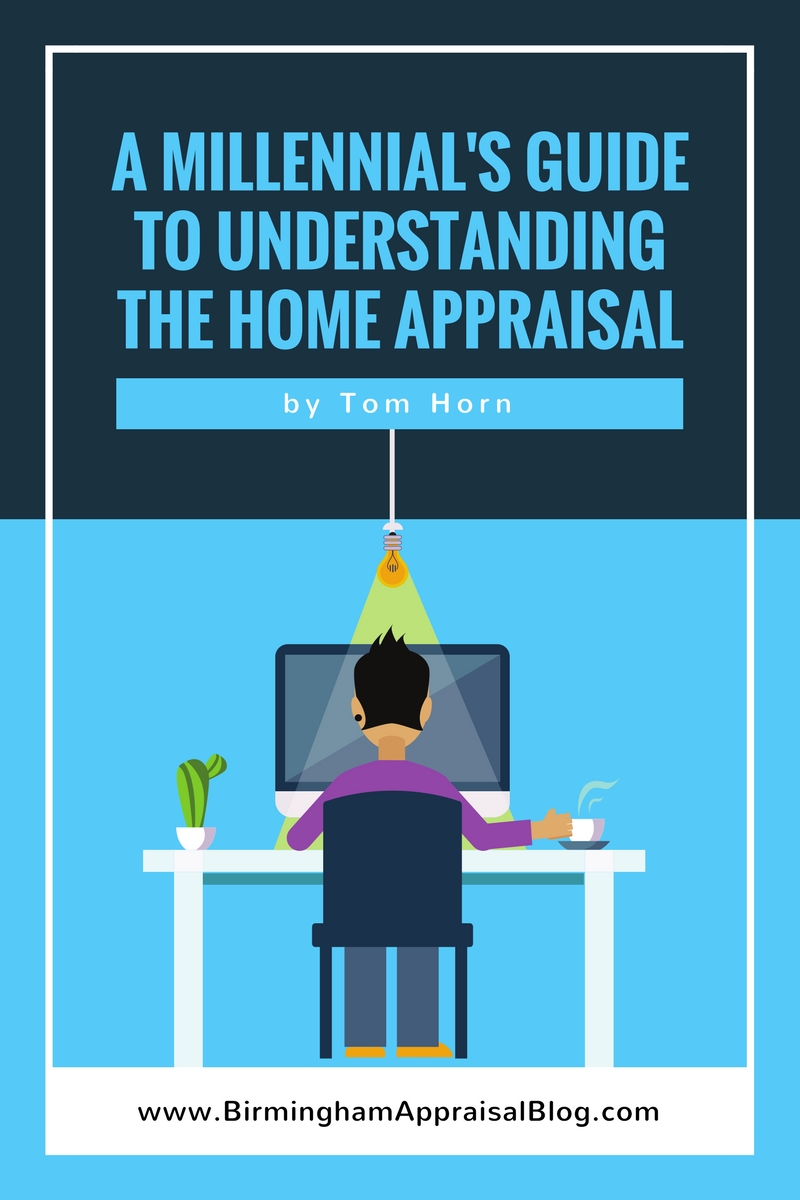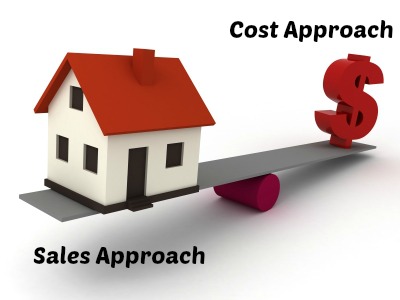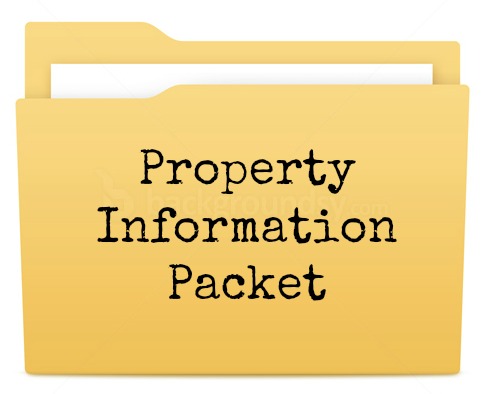A Millennial’s Guide to Understanding the Home Appraisal
 Millennials have recently become a big topic in real estate circles. Some reports indicate that they have surpassed baby boomers as the largest generational group in the United States. They also make up the largest group of home buyers.
Millennials have recently become a big topic in real estate circles. Some reports indicate that they have surpassed baby boomers as the largest generational group in the United States. They also make up the largest group of home buyers.
Millennials consist of people born between the early 1980’s up to the late 1990’s. Many of these consumers have never purchased a home and are unfamiliar with the home buying process. They have the potential to positively affect the market as they purchase their first home and inject new life into the economy.
The goal of the information I am providing here in this millennial’s guide to understanding the home appraisal is to educate this large group of potential home buyers about what an appraisal is. Rather than being in the dark about the appraisal process as so many others have been in the past this information will serve as a basic tutorial for understanding what goes on during the appraisal as well as how to read the report and understand how and why the appraiser did what he or she did. If you have any questions after ready through this please leave a comment below.
What is an Appraisal?
The simplest answer is that an appraisal is an unbiased estimate of value for a parcel of real estate, either
vacant or improved with a home, at a specific point in time. The estimate is given by a disinterested third party, the appraiser because they are better able to give the most accurate opinion of value.
An unbiased appraiser is used because the buyer wants the value to be as low as possible and the seller wants it to be as high as possible. The bank or other lending institution, on the other hand, is seeking a value estimate that provides the most accurate market value estimate in case it is necessary for them to take the property back into foreclosure. They want to make sure they can sell it to recover the money that they loaned on it.
Why do I need an appraisal?
Most people need an appraisal because they do not have the funds themselves to purchase a home outright. Because of this, they obtain financing from a bank, credit union, or other lending institution.
The bank loans money to the buyer to purchase the home. When doing so, the bank needs to know if the property is worth the money that they are lending.
The lender obtains a market value appraisal to make sure the price the buyer is paying is legitimate. It would not be in the banks best interests to loan more money on a house than what it is worth.
If a buyer was purchasing a home for $100,000, but it was only worth $80,000, then the bank would be over loaned. If the buyers were not able to make the mortgage payments and the home was foreclosed on the bank would need to sell it to recover the money they loaned.
If more money was loaned on the home than what it is worth the bank will lose money. Appraisals are used to ensure the financial stability of the lender as well as that of the United States.
Things Millennials Should Know about the Appraisal Process
The appraisal report that is required when you get a mortgage loan is owned by the bank. They engage the services of the appraiser in order to make sure that the collateral that they are lending money on is actually worth what is being paid for it.
 Because the bank owns the report the appraiser is not allowed to speak with anyone about the outcome of the appraisal after it is completed. Appraisers can have conversations with agents and the buyer and seller prior to completion, however, there can be no discussion about the value.
Because the bank owns the report the appraiser is not allowed to speak with anyone about the outcome of the appraisal after it is completed. Appraisers can have conversations with agents and the buyer and seller prior to completion, however, there can be no discussion about the value.
The appraisal that is being performed on the home you are purchasing is not meant to verify the sale price but rather to see if the price is supported by market sales data. The appraisal will compare your property to other recent sales and active listings to see how it stacks up.
By looking at what other similar homes have sold for and also at what is currently available for sale we can determine if it is overpriced. The appraisal is not a casual off the cuff estimate of the value of the home. It is a detailed analysis of the local real estate market based on the physical characteristics of the subject property.
Appraisals and home inspections are sometimes confused with one another. An appraisal is mainly concerned with the market value of the property while the home inspection will look at the overall condition of the house including the electrical, plumbing, and mechanical systems among other things. The appraisal will take into consideration any repairs that need to be made but the appraiser’s job is not to look as close to the various systems of the house as the inspector does.
The Appraisal Process
The appraisal process starts when the bank orders an appraisal as part of a home purchase loan. Most lenders have a list of approved appraisers that they use when ordering an appraisal. They will provide information to the appraiser about the address, contract information, and who to contact to gain access to the property. In addition, they will let the appraiser know the due date that they need the appraisal report back by.
After the appraiser receives the appraisal order they will contact the agent, or whoever can provide access, and set up an appointment to view the property. The appraiser must have access to all areas of the house, including attics, basements, and crawl spaces. The utilities should be turned on so the appraiser can verify the operation of appliances and other systems of the house.
During the appraisal observation, the appraiser will measure the house to get accurate square footage. Information about the materials of construction, quality, and condition will also be collected. Photos of all areas of the house will be taken along with special features or damage that the home may have. This information will be used to help the appraiser locate recent and similar sales for comparison to the subject.
In addition to collecting information about the house to aid in locating comparables, it will also be used to establish a quality of construction and condition rating for the property. This helps when developing a
reconstruction cost, which is one of the three approaches to value.
The Three Approaches to Value
Cost Approach
The cost approach considers the current cost of labor and materials. The appraiser can use various sources of cost data such as local contractor estimates or national cost services such as Marshall & Swift. In addition to the cost of the house and improvements, the appraiser also develops a land value estimate to arrive at a total value of the improvements as new. Depreciation estimates are then factored in to arrive at a final value for the cost approach.
cost data such as local contractor estimates or national cost services such as Marshall & Swift. In addition to the cost of the house and improvements, the appraiser also develops a land value estimate to arrive at a total value of the improvements as new. Depreciation estimates are then factored in to arrive at a final value for the cost approach.
Sales comparison approach
The sales comparison approach is the approach most people are familiar with. It is the approach that uses “comps” to come up with a value. Comps, short for comparables, utilizes recent and similar home sales to estimate value. The idea behind this approach is to find out what other similar homes sold for because the home being appraised should sell for about the same amount.
Of course, finding identical homes that recently sold can be difficult. Because of this the appraiser finds
recently sold homes which are as similar as possible to the subject and then adjusts for any differences that exist.
The “adjustments” that appraisers make are for the value differences that exist for various features a home may have. For example, if two similar homes recently sold but one home had a pool and the other one did not then the difference in the sale price would be attributed to that one different feature.
After all of the adjustments are made the sales will provide a range of value. The appraiser will then reconcile a final value from this range that takes into consideration the properties condition, quality, and features as well as the local real estate climate. A high demand area with little inventory may contribute to the appraiser placing more emphasis on the upper end of the range while a high inventory area with little demand may reflect the lower end of the range.
Income Approach to Value
The income approach to value is used to measure the income-producing potential of the property. This approach is best suited to those areas that have a lot of rental properties in the area to use as comps.
This approach requires the appraiser to locate comparable sales that were rented at the time of sale. The sale price is then divided by the rent to arrive at a gross rent multiplier (GRM). The reconciled GRM for the comps is then applied to the rental of the subject property to arrive at a value by the income approach.
This approach is the least used of the three, due to lack of reliable rental data, however, it can provide a good estimate of value if data is available.
Whatever approaches to value are used, the appraiser provides a final opinion of value based on estimates arrived at from each approach. The final value is reconciled based on which of the three approaches is most relevant to the assignment and considering the reliability of data of each approach.
Important Things Your Agent can do to help the Appraiser
 If you are a buyer there is not a lot you can do to help the appraiser, however, you can speak with your agent to make sure they do everything possible to aid the appraiser in doing their job. Agents can share information with the appraiser that helps them understand how they came up with the list and contract price.
If you are a buyer there is not a lot you can do to help the appraiser, however, you can speak with your agent to make sure they do everything possible to aid the appraiser in doing their job. Agents can share information with the appraiser that helps them understand how they came up with the list and contract price.
Knowing the contract activity can also provide a clear picture of the demand the property has. If the contract is at the top of the price range for the area, knowing that there are three contracts on the house can help the appraiser provide concrete support for a higher reconciled value.
It is important for appraisers to know any updates or renovations a home has had. This information helps to provide quality and condition ratings for the subject property as well as support for adjustments.
Sales provided by the agent can help the appraiser understand how the list and contract price were arrived at. Keep in mind however that the appraiser must review and determine if they can be considered to be comparable. Only those sales meeting appraisal and underwriting guidelines will be included in the appraisal report.
How to read an appraisal
After the appraisal report is complete it is delivered to the lender. The lender is required by law to provide a copy to the borrower.
If you’ve never needed an appraisal in the past or have never seen one they can be slightly difficult to
understand. The report will include physical information about the subject property, photographs, and a floor plan sketch with the square footage information.
The report also contains the sales that were used to compare to your house and a map to show their location. I put together a video a while back to explain the different parts of the report that you can view below.
Since I created this video there have been some additional changes made to the appraisal form with additional abbreviations being added along with quality and condition ratings. If you have any questions not covered in the video send me a video and I’d be glad to answer them for you.
Conclusion
As you can see there is a lot that goes into an appraisal and I hope my millennial’s guide to understanding the home appraisal is helpful to you. If you have any questions after reading this feel free to contact me as I’m always here to help. As always, thanks for reading.
If you liked this post subscribe by email (or RSS feed). Thanks for visiting.
WHAT a good article! If someone knew nothing about this topic, they would come away most educated. I would just add that, as millennials are doing all this buying, they will also become a population that is selling. There are wise tips for sellers to know about working well with the lender’s appraiser: what TLC to make sure the house gets beforehand, and good things to remember when the appraiser is there. A millennial buying is all set with Tom’s words, and a millennial selling might also want to read https://www.homelight.com/blog/how-to-increase-home-value-for-appraisal/.
Thanks, Sienna. Looks like you have some great information on your site too.
Learn something new every day! This was a good read Mr. Tom!
Thanks, Lee. Glad you liked it!
Wow Tom, you put the entire appraiser book into one blog post. Great job. Hope you have something left for next week 🙂
Thanks, Gary. It WAS long but I hope it provides value to millennials and all other first time home buyers. Got any ideas for next week’s post?
I love this newsletter! ! Thank you for great information that I will be printing out and using for all buyers in general.
I have a idea for next week, if I may…how can us Realtors learned to have better cmas? What numbers can we use as a guide to back out..say a pool, an extra bedroom, an enclosed lanai? Some rules, for example, unpremitted enclosed lanai with hot tub, bonus room, excerise rooms?
Thank you, enjoy reading your blogs.
Thanks Doris for your kind words. Short of taking appraisal classes and learning the various valuation methods it is difficult to pass along a rule of thumb adjustment for the various features you mention. Since property values vary from area to area and the value of various features also vary the adjustment amount could be different depending on where the property is. I wrote a blog post a while back showing how agents can use appraisal methods to arrive at a list price (or range) by using qualitative methods rather than quantitative. You can read it here: What qualitative analysis is and how agents can use it to price their listings
Great stuff Tom. I’m teaching an hour-long class in January to a group of new agents. I’ll be talking about comp selection, but I’m also going to discuss some of the things you mentioned above. When I go to prepare the class I will definitely keep in mind some of the logical flow you provided here. Thanks eh.
Thanks, Ryan. I’ve seen the comments from agents who attended your class and it sounds like they get a lot out of them. Good luck with this one.
Great article. I’m sure there are many folks (not just millennials :)) who could benefit from reading this and understanding the appraisal and the process!
Agreed, Erika! I hope this is useful for anyone not familiar with the appraisal and home buying process. Thanks for reading.